You want to pop the question to that special someone, but have NO CLUE how to pick out the most perfect engagement ring. Do not worry, you are not alone. That is why we at SnapKnot thought it would be great to start a new series all about engagement rings. In this first post of our series, you will learn all you need to know about picking the perfect diamond!
We have spoken with Roman, who is the Gemologist and Lead Designer at Forever Diamonds NY, to get some great insight on all there is to know about picking the perfect diamond. Here is all the great information we found out that will help you choose the best stone for the love of your life.
A few terms you should know when talking about diamonds.
Brilliance – The brightness that appears to come from the heart of a diamond. With a level that is unique to diamonds, other gemstones possess lesser levels and don’t have the ability to equal the extent of a diamond’s light-reflecting power. Brilliance is produced primarily when the light makes its way into the table, reaches the pavilion facets, and is then reflected out through the table, where the light is most visible to your eye.
Brilliant Cut – One of three variations of faceting layouts. In this type of arrangement, all facets appear to radiate out from the center of the diamond toward its external edges. It’s called a brilliant cut because it is designed to maximize brilliance. There are a number of brilliant cuts like round diamonds, ovals, radiant, princesses, and more.
Bow ties – are blocked light and are best to be avoided. The bow tie effect is a dark area across the center width of many fancy-shaped diamonds… this effect can be seen in Pear, Heart, Oval, and Marquise cut diamonds.
Depth – The height of a diamond from the culet to the table.
What are the different diamond cuts?
There are many, many shapes that diamonds can be cut in. Some of the more popular cuts include Round, Princess, Oval, Cushion, Radiant, Emerald, Asscher, Pear, Marquise, Trilliant, Heart. There are also many other shapes of diamonds that are not as common or are used more often as side stones to accent the center stone. Those cuts include Baguette, Tappered Baguettes, Kite, Half Moon, Trapezoid, and Bullets.
The key to buying a diamond and seeing all the different cuts is simply comparing them side by side. Here are some descriptions of each cut you can find.
Round
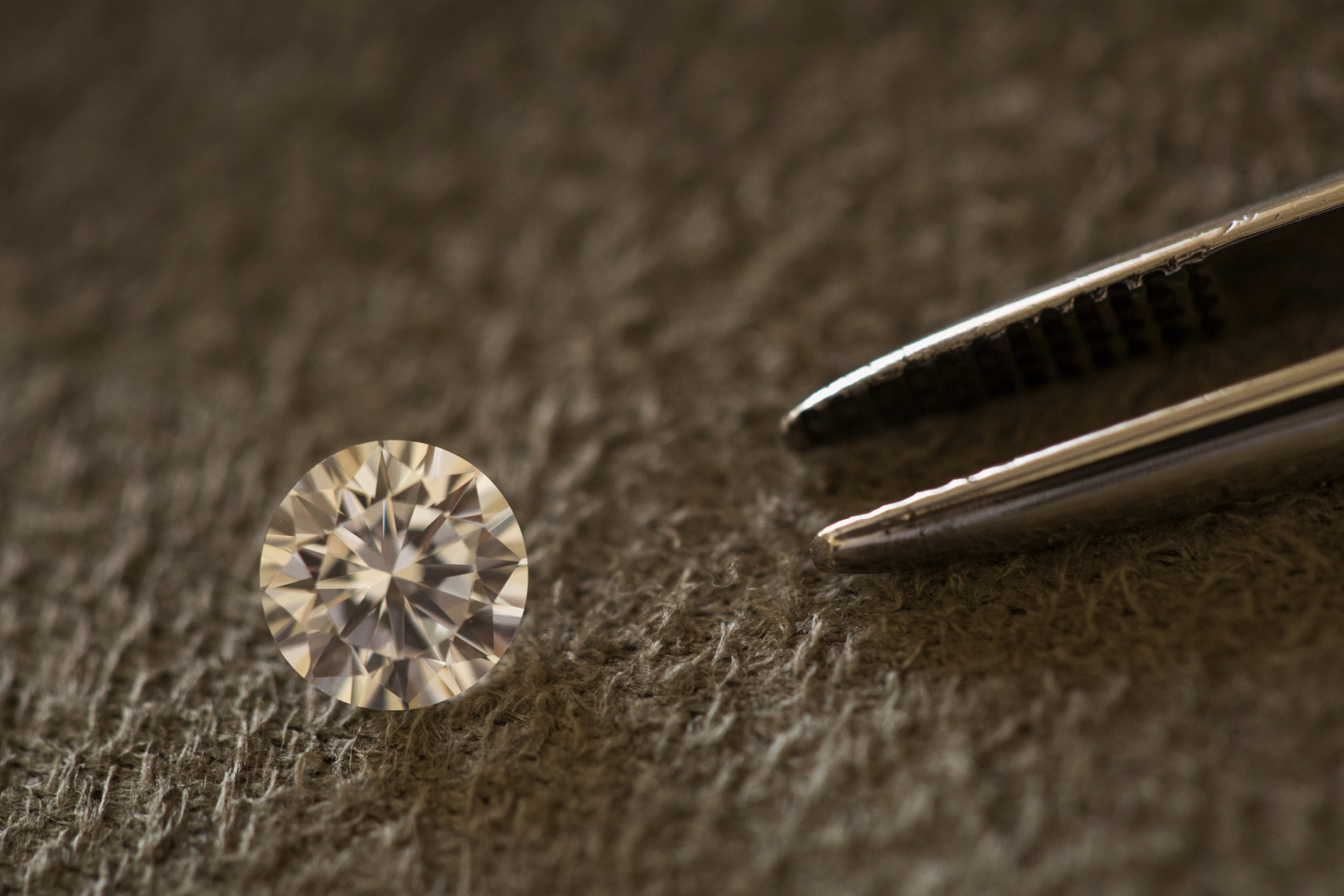
The round diamond is by far the most popular shape. It is also the most expensive of the different cuts as the round shape is the most expensive to cut, and the price is driven by supply and demand.
Princess

The princess is a square cut brilliant diamond with sharp corners that can also be cut more rectangular. When purchasing a Princess cut, buyers should look for square shapes and avoid elongated cuts. Although some women like the longer rectangular look, the downside of it are poor resell and upgrade values.
Roman said, “the Princess Cut is great for people who love the look and brilliance of a Round diamond but prefer a square or rectangular shape. Women who are comparing an ideal cut 1.00 carat Round to a 1.00 carat Princess should note a princess cut will look smaller.”
Oval
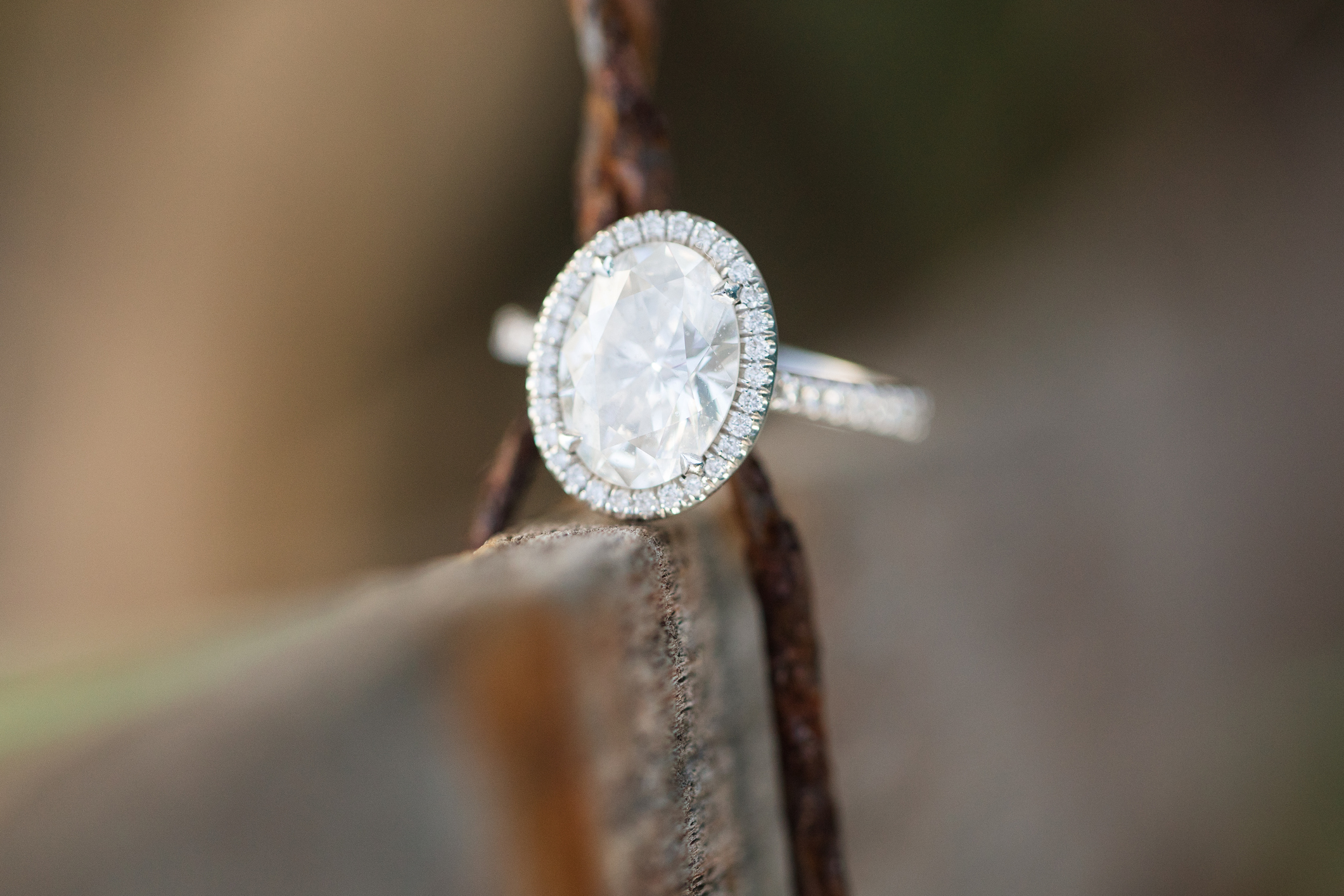
Oval cut diamonds are elliptically shaped and are a great stone that will elongate the finger. It’s a mix of a round and marquise shape. A well-proportioned Oval should have a minimal bow tie effect due to a result of angles.
Cushion
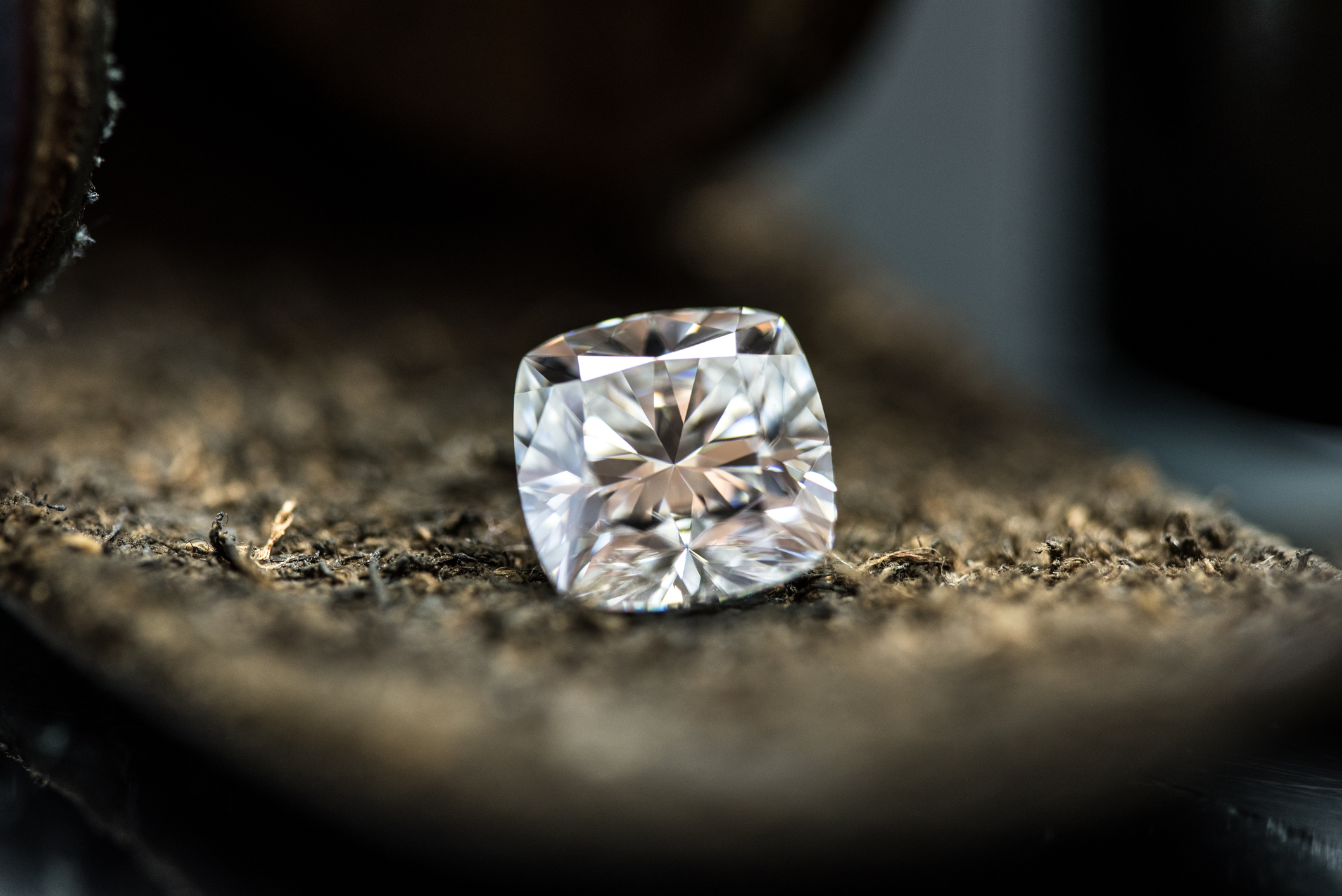
A cushion cut diamond is square or rectangular with rounded corners and curved sides… the stone almost looks like a pillow shape. Cushion cut diamonds are probably the most difficult diamond to buy because there are so many facet patterns and variations: including Cushion Brilliant and Modified Cushion Brilliant, as well as Modern cut or Antique cut.
Roman noted that “It is very important to note with cushion cuts that every diamond cutter is cutting the stone however they want and labeling them cushion because there is no standard. Because of this, a buyer should really understand and do their homework when it comes to the cushion cut. Be sure to compare diamonds and stay away from very deep and shallow stones.”
Radiant
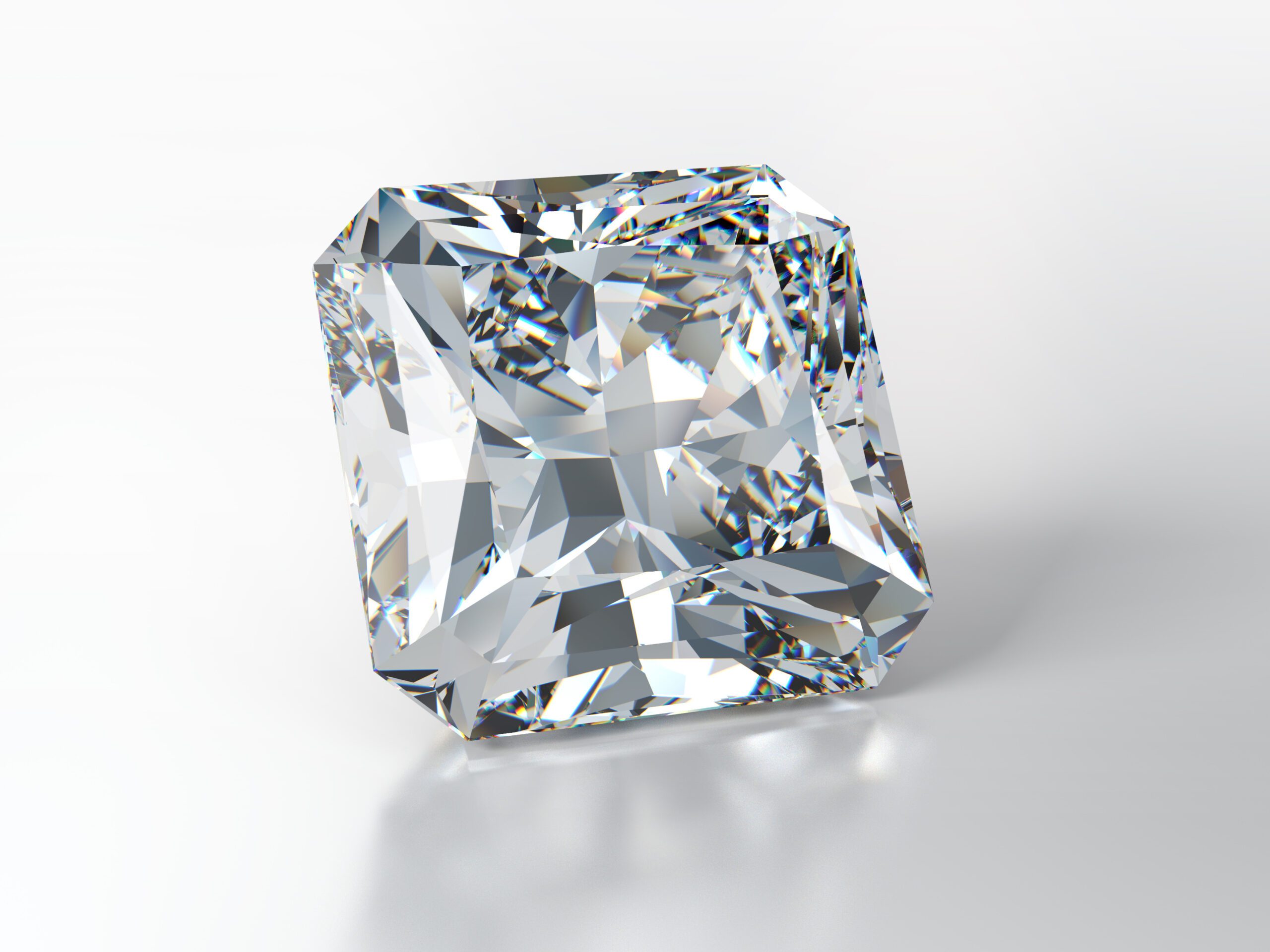
Radiant cuts are either square or rectangular with cut corners and share similar characteristics to a princess cut. One of the few differences is that the radiant cut does not have the protective setting style because there are no sharp corners.
Emerald
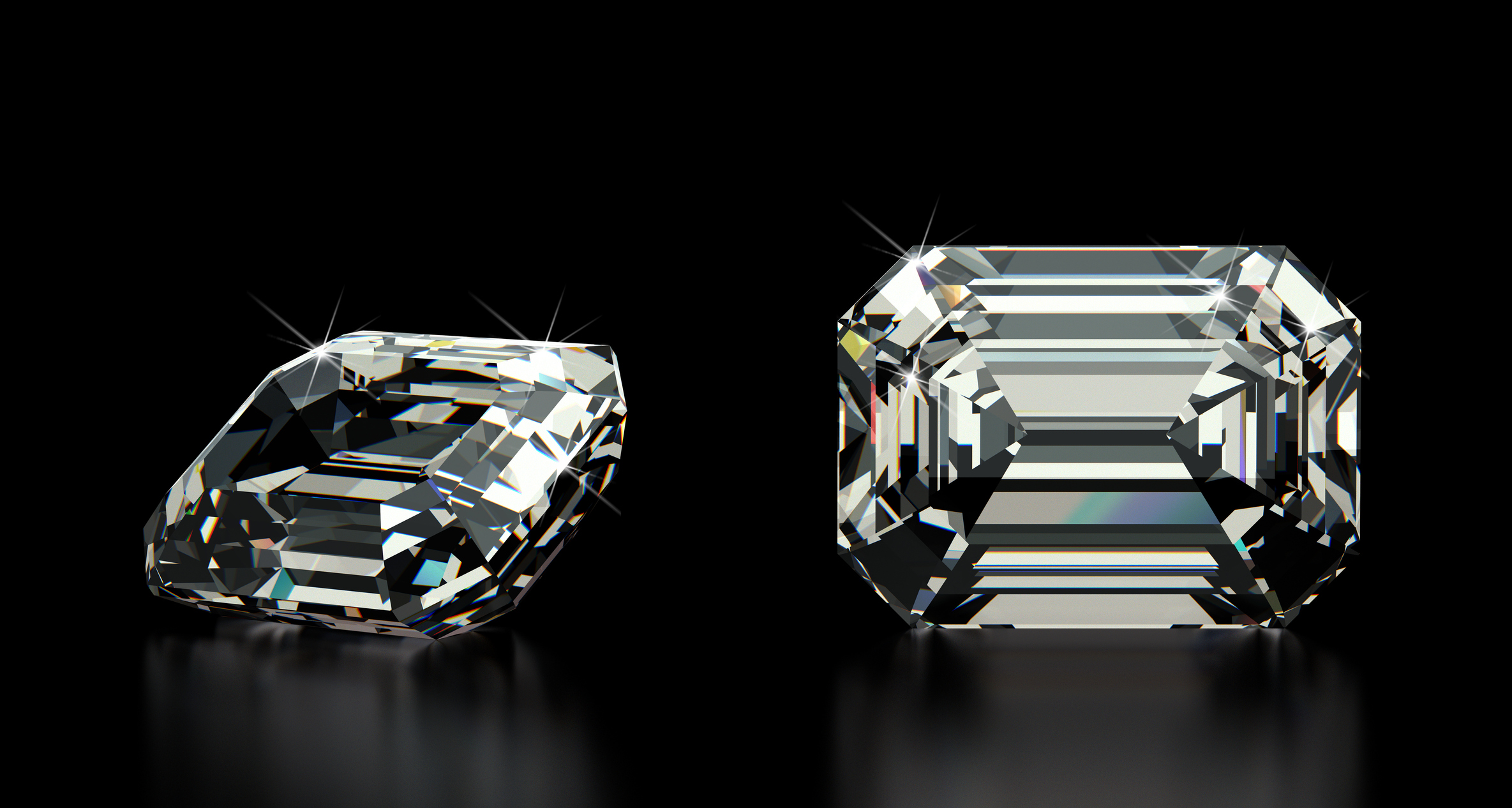
Emerald cut diamonds are known to be rectangular and are truly subtle, understated, and very elegant. Due to the passive nature of the cut, it is easier to see natural inclusions, and therefore you would need to buy a higher clarity (VS) than a brilliant cut whereas you can buy a more affordable clarity (SI) because the brilliance may hide imperfections to your naked eye.
Asscher
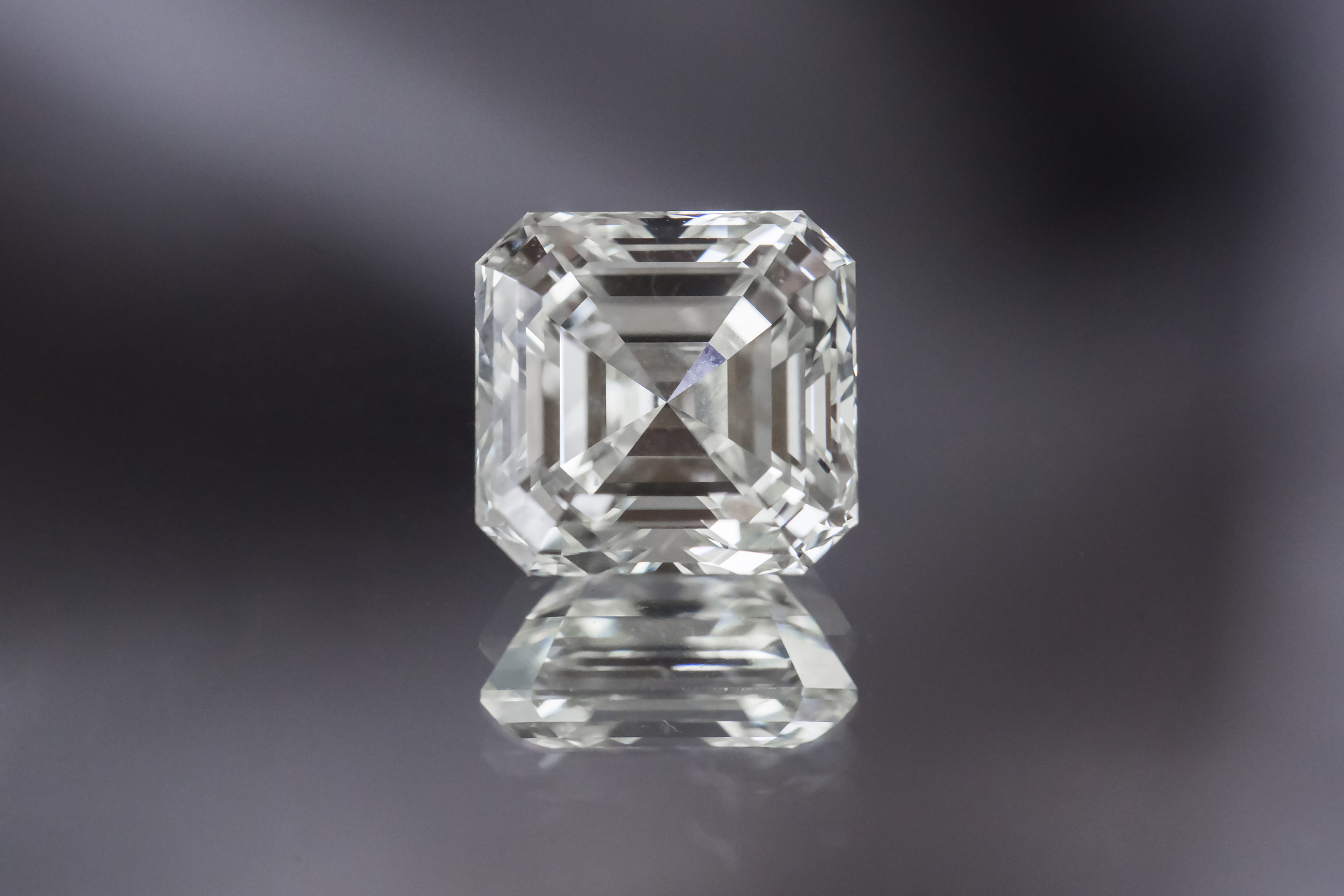
An Asscher cut is a square emerald.
Pear
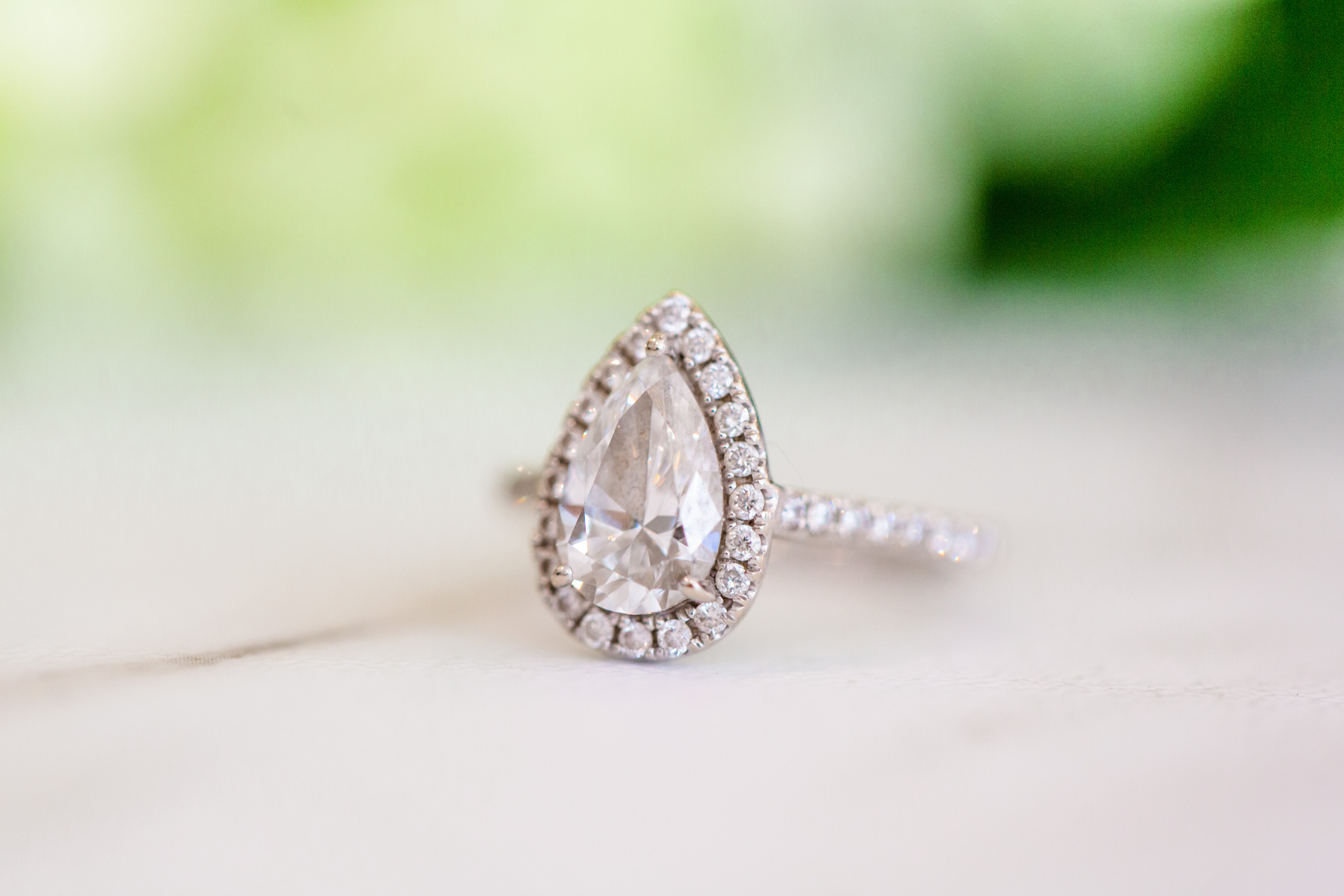
The Pear shape cut looks like a teardrop and is known to have bow ties. The tip of the diamond needs to be secured as it tends to chip easily. Pear shapes are also a personal preference, some people like the pear shape cut to be long and thin, while others would prefer the diamond to be a bitter fatter.
Marquise
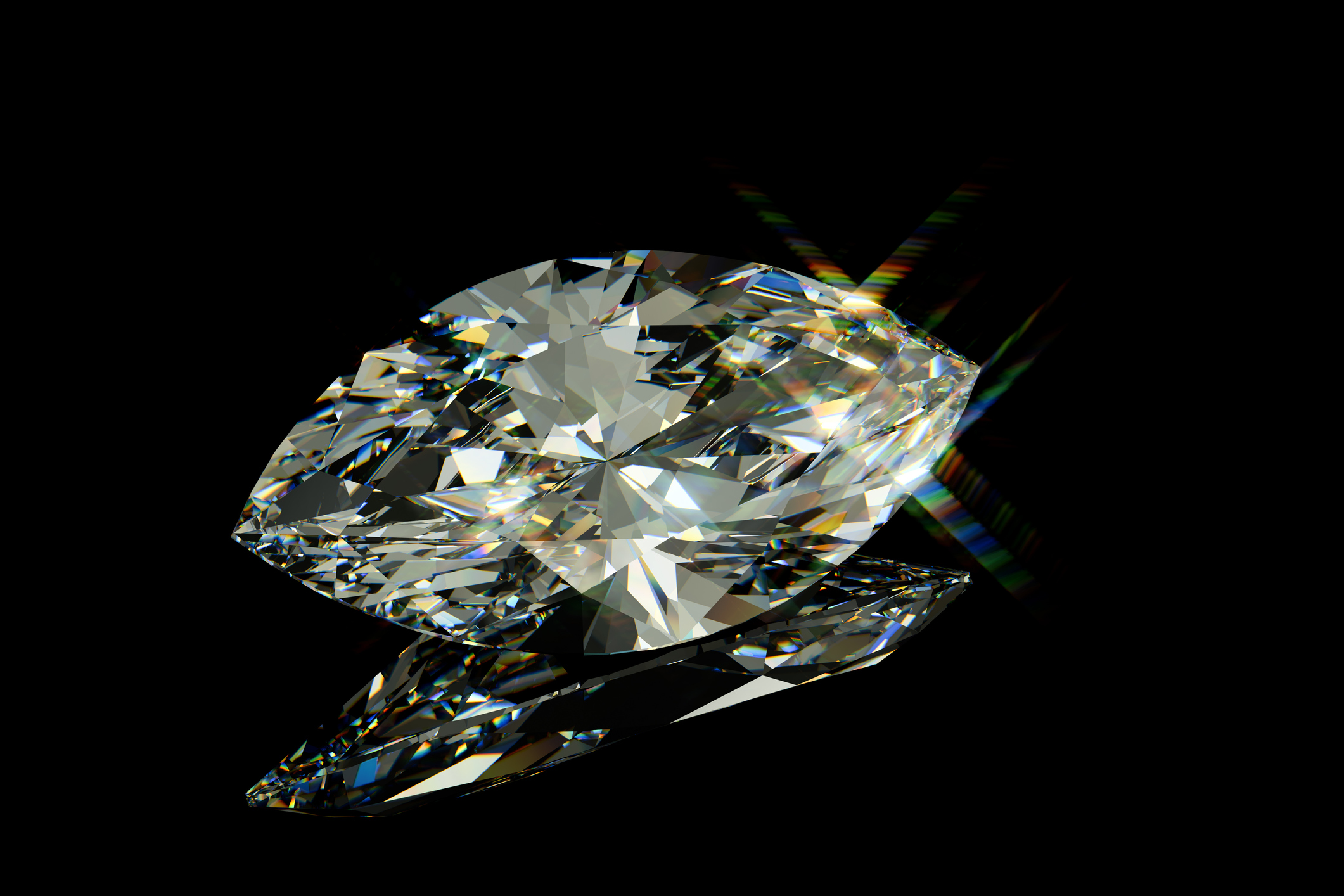
The Marquise cut is an elliptical-shaped brilliant that is similar to an eye shape with two pointed ends. It’s a great shape to elongate the finger. It should be bought by comparing stones & bow ties should be best avoided.
People tend to like the 1.75 to 2.25 length-to-width ratio, which happens to be ideal. Ideal table 55% to 60% ideal depth 59% to 63%. Both ends of the stone need to be protected, as they do tend to chip.
Trilliants
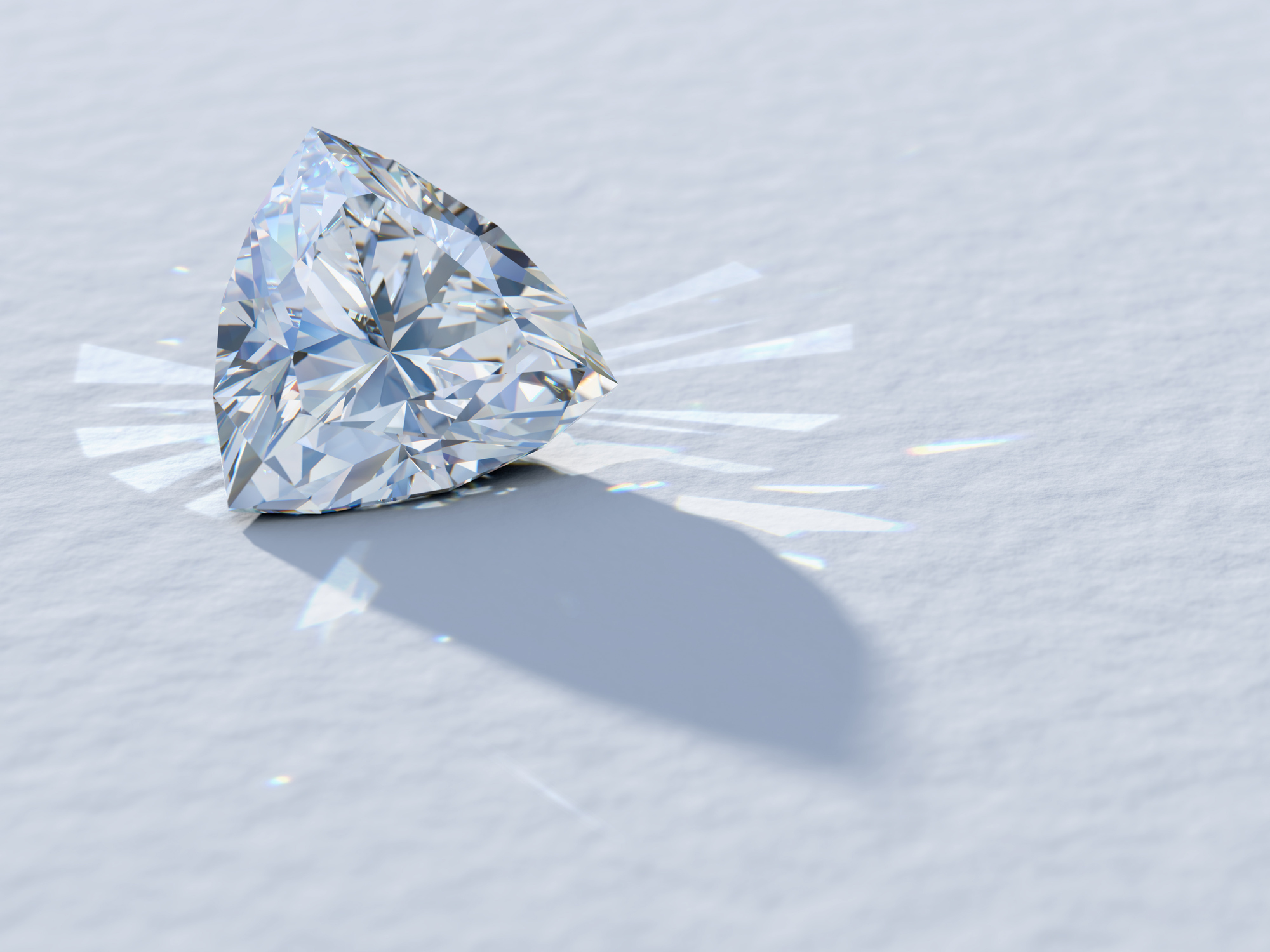
Trilliant cuts are triangular brilliants. They tend to be shallow and are used mostly as side stones for fancy Shepard center stone diamonds. But, when a trilliant cut has been cut truly and exceptionally well, it can be a stunning centerpiece in an engagement ring.
With most stones having sharp corners, a trilliant cut must be protected well to prevent breaking. Trilliants also appear larger from the top & keeping them clean is very difficult.
Heart
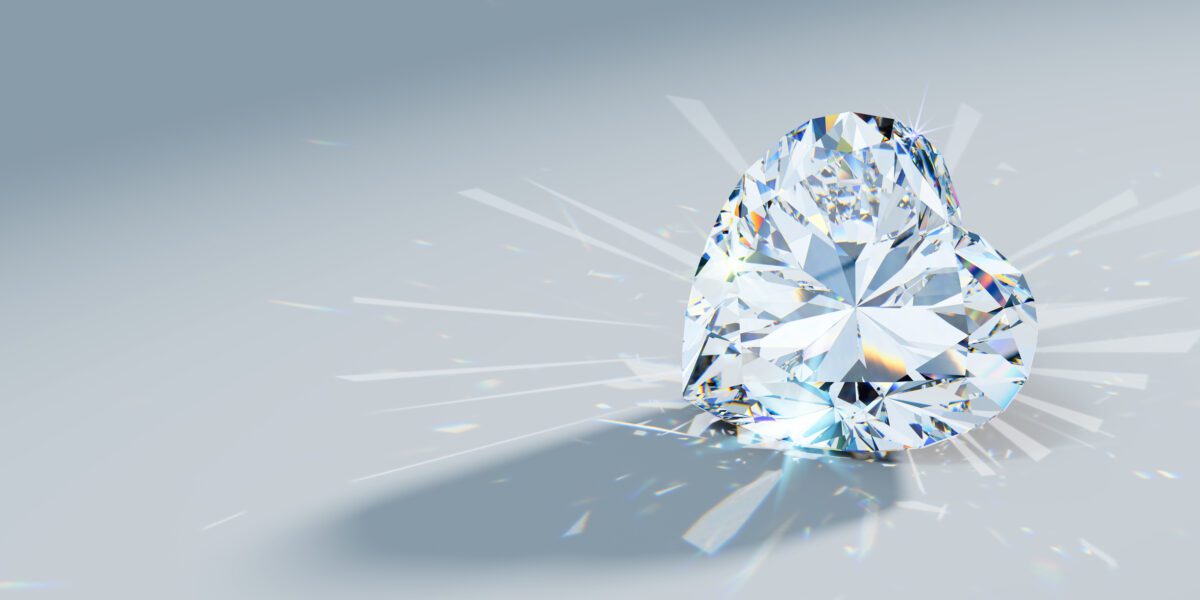
A heart-shaped diamond is just that – shaped like a beautiful heart. They are known to have bow ties as well.
Tips from Roman: If you are thinking about buying a 1.00 carat of any shape, Roman highly recommends that you buy a stone that is slightly larger than the desired size. This is due to chipping and damage. For example, if you buy a 1.00 carat, and it should have every chip that you need to get recut, the stone will now fall into a different buying category as you will lose some of the carats when it gets recut.
What is the best diamond to buy?
Here is what Roman had to say about this common question.
“The best diamond to buy is a commonly asked question, and there are 2 perspectives on this. I always say buy what she loves regardless of what he and I think… at the end of the day, you want to make your wife happy with what she wants. The second perspective is that you should think of it as an investment. A Round cut diamond is the most sought shape and is always more expensive than any other shape, and it will maintain greater value over the long run.”
Now let’s explain a diamond’s value.
The real value of anything is the joy it brings you. The diamond cut or size you have on your engagement ring is only a thing… but that ring signifies a beautiful relationship that the two of you share. However, there is a market value that works totally different and is based on supply and demand. From a market perspective, you should always try to buy what the market has less of and not what the market has a huge supply of.
Of course, you do not want to go to the extreme… Do not buy a diamond so rare and so expensive that no one else could afford it either.
Certified vs. Non-Certified
A certified diamond is a diamond that has undergone quality analysis by a trusted gemological lab (Roman recommends GIA – Gemological Institute of America) and has been issued a lab report, otherwise known as a “certificate.” Non-certified diamonds have not been put through formal laboratory grading.
For people who are purchasing a diamond that will be a major expense, it is highly recommended that you buy a certified diamond rather than a non-certified one. Investing a large amount of money in a non-certified diamond can be very risky to do.
Roman said, “Mostly all diamonds come with some sort of certificate from the factory already and clients believe the cost of the certification is what causes the price to jump, but that is simply not true. What causes the price to jump is the results that are in the certification. You as a buyer need to know what it says on the certification and how to read it. The certification is a map of that diamond and if you don’t understand what it says in its entirety then you will get hustled to some degree. No 2 diamonds are the same, therefore none of them are graded the exact same way.”
The 4 C’s of Diamonds
The quality of a diamond is accessed in many ways. These 4 C’s of diamonds are what you need to remember when you are diamond shopping.
- Color – Each diamond is graded using a scale created by one of the leading gemological industry organizations. An ideal stone is colorless; however, most stones possess some form of color.
- Carat – The size of the diamond can dramatically affect the value of the stone and the diamond jewelry in which it’s used. Generally, the larger the stone, the greater its value, however, other factors also affect value too.
- Clarity – The presence of imperfections, or a stone’s clarity, is a large component of assessing the value of diamonds. While diamond jewelry buyers can see imperfections that appear as small cracks, these blemishes often can’t be seen with the naked eye.
- Cut – The Cut refers to the symmetry, proportioning, and polish of a diamond and impacts its brilliance; this means if it is cut poorly, it will be less luminous.
Picking the perfect diamond is tricky, there is no question about that. Between figuring out what cut you should use, the size and so much more, it can be stressful. But just remember, no matter what you pick, you are choosing it from a place deep in your heart for your soon-to-be fiancé to wear for the rest of her life, and nothing can be better than that!
If you are in the New York area, and you need to find that perfect diamond, be sure to visit Roman and his team at Forever Diamonds NY, where they can answer all of your questions and help you find the perfect diamond for the one you love.
Be sure to check out our second post in our engagement ring series, which is all about engagement ring styles!
Are you about to propose? Start thinking about those engagement photos you will soon be taking together. Here is a great post all about how to pose during your engagement photos.





